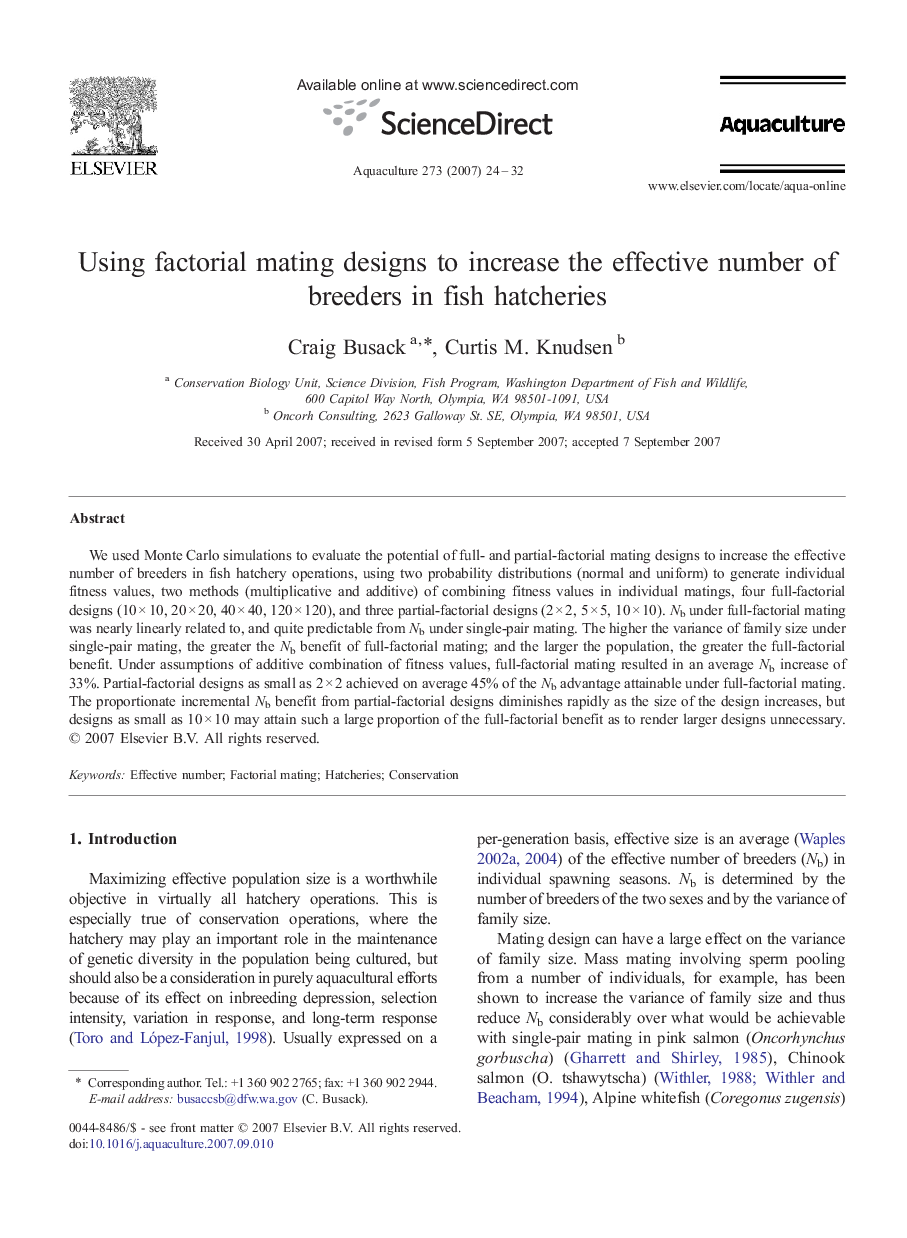| Article ID | Journal | Published Year | Pages | File Type |
|---|---|---|---|---|
| 2424740 | Aquaculture | 2007 | 9 Pages |
We used Monte Carlo simulations to evaluate the potential of full- and partial-factorial mating designs to increase the effective number of breeders in fish hatchery operations, using two probability distributions (normal and uniform) to generate individual fitness values, two methods (multiplicative and additive) of combining fitness values in individual matings, four full-factorial designs (10 × 10, 20 × 20, 40 × 40, 120 × 120), and three partial-factorial designs (2 × 2, 5 × 5, 10 × 10). Nb under full-factorial mating was nearly linearly related to, and quite predictable from Nb under single-pair mating. The higher the variance of family size under single-pair mating, the greater the Nb benefit of full-factorial mating; and the larger the population, the greater the full-factorial benefit. Under assumptions of additive combination of fitness values, full-factorial mating resulted in an average Nb increase of 33%. Partial-factorial designs as small as 2 × 2 achieved on average 45% of the Nb advantage attainable under full-factorial mating. The proportionate incremental Nb benefit from partial-factorial designs diminishes rapidly as the size of the design increases, but designs as small as 10 × 10 may attain such a large proportion of the full-factorial benefit as to render larger designs unnecessary.
